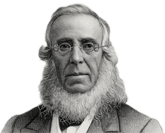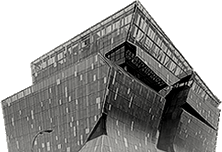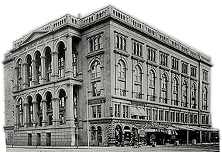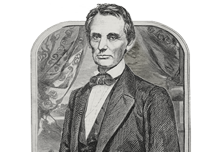Anik Pearson AR’95

Anik Pearson, the founder and principal of Anik Pearson Architect, P.C., says her education at Cooper “prepared me to question received opinions and accepted conventions. I would say that is the maxim that I took away with me, and that guided me in my journey in life and in the field of architecture.”
Over the course of her career, Pearson has designed more than 140 projects and built a reputation for delivering thoughtful, timeless designs that emphasize sustainability, functionality, and aesthetic harmony. “Every project is different, as it intimately and directly relates to the client,” she says.
Though born in Virginia, Pearson was raised in France until she was 16. She returned to the United States to attend high school since the French school system then required students to focus their studies on one or two subjects, preferably math or science. But Pearson wanted to study math, science, history, geography, foreign languages, and the arts. So, her family left their home in the French Alps and settled in Southampton, Long Island. Her mother and stepfather, a master craftsman in ornamental ironwork, had to build a new life for themselves.
Cooper’s rigorous architecture program, coupled with full-tuition scholarships, was an obvious draw for Pearson and her family, who were still establishing themselves and their ornamental ironwork business in those early years back in the US. During her time at Cooper, Pearson, who graduated as valedictorian in 1995, made models and installations for noted professors and/or architects such as Lebbeus Woods, Elizabeth Diller and Ric Scofidio, James Turrell, Steven Holl, and James Polshek. Over the summers, she interned with Cicognani Kalla Architects. The exposure to what she calls “unconventional, experimental, conceptual art, thought and design” at Cooper was a terrific complement to the summers spent learning the practical concerns of running an architecture firm, from schematic design to final sign-off. “By the time I graduated from Cooper, I could manage my own projects.”
At the age of 29, she started her own firm, despite warnings from friends and family that it would be tough going, especially as a woman not working with a male partner. Her first residential commission came from her parents, a house 10 years in the making. Called Salt Gulch Ranch, it is in the high Mesa desert of Southern Utah. Featured in House Beautiful, the house grew out of a collaboration between Pearson and her stepfather, who fabricated a steel-louvered breezeway, a main door of oak planks joined by strap hinges, iron studs, balcony railings, and other aspects of the house. Like all her work, the ranch was designed with an eye to sustainability—from durable materials to low-energy and low-water consumption. It features a steel frame clad in stucco and an interlocking copper roof, chosen for their ability to expand and contract with extreme temperature changes.
Her most recent project is a greenhouse pool building in Penobscot Bay, Maine. “It is a solar-powered, all-electric, water-recapturing building with a high-performance building envelope,” Pearson says. “The landscaping will make use of native plants to promote biodiversity without the need for irrigation, harmful fertilizers, or pesticides. The main challenge was to design a building with natural materials (cedar, stone, metal) which looks timeless on the exterior, while also detailing the building envelope and minimizing energy use to manage a warm humid indoor environment in a cold climate year-round.”
She makes a point of serving as a mentor to young women in architecture since she gleaned much from her own mentor, Ann Kalla. In fact, in 2019 Pearson, Angelique Pierre AR’10, and Nancy Kleppel co-founded MWA (Mentorship for Women in Architecture). Their goal has been to make the work of women architects working in the field today visible to incoming practitioners, but also to offer insights, share stories, share tools, provide support and establish relationships so that incoming practitioners stay encouraged and stay on course to thrive in the profession. In a recent interview, Pearson cited the San Francisco AIA EQxD, which showed that the top five obstacles for women in the field are low pay, long hours, lack of opportunities, challenges with work/life flexibility and the absence of role models. It’s this last point in particular, that Pearson tries to combat via the MWA.
In addition to her architectural practice and mentoring, Anik Pearson co-founded the Sue Ferguson Gussow Scholarship at The Cooper Union in support of architecture students and plays a key role in the professional community, just finishing her second term as Chair of the New York State Board for Architecture, Office of the Professions.




